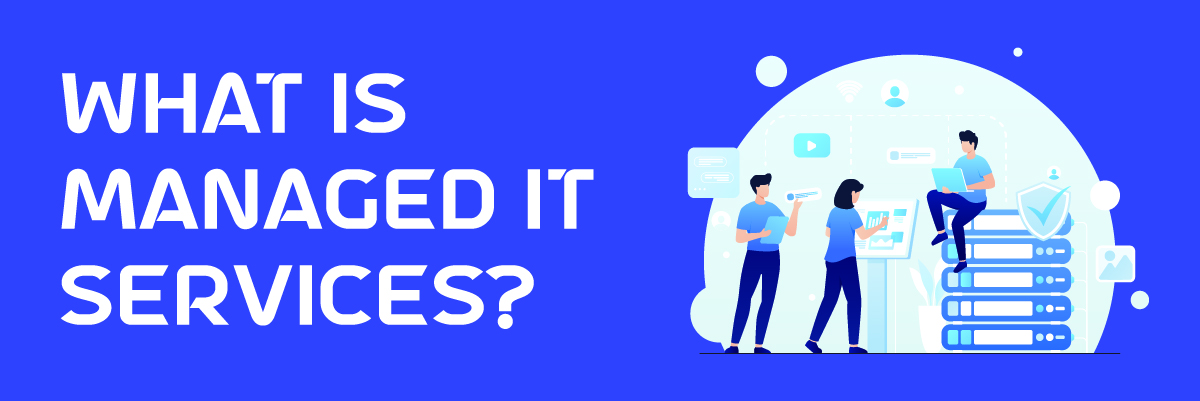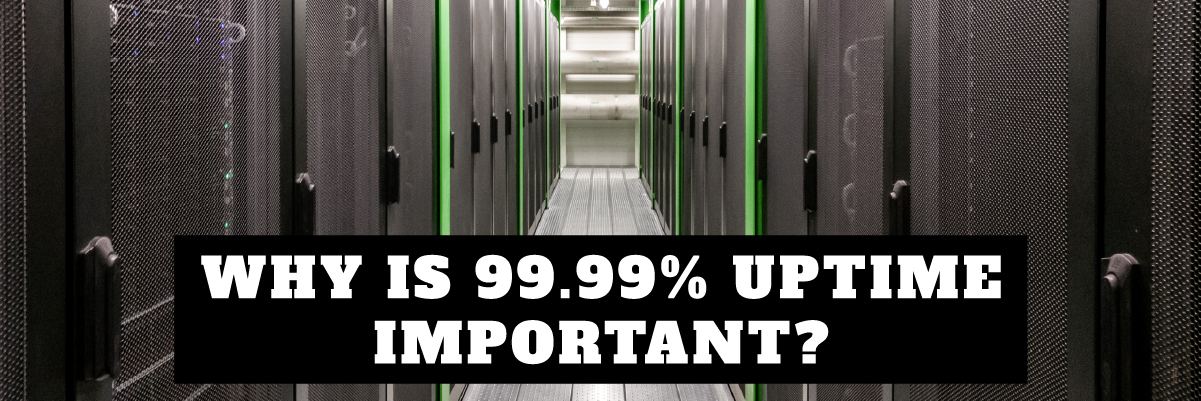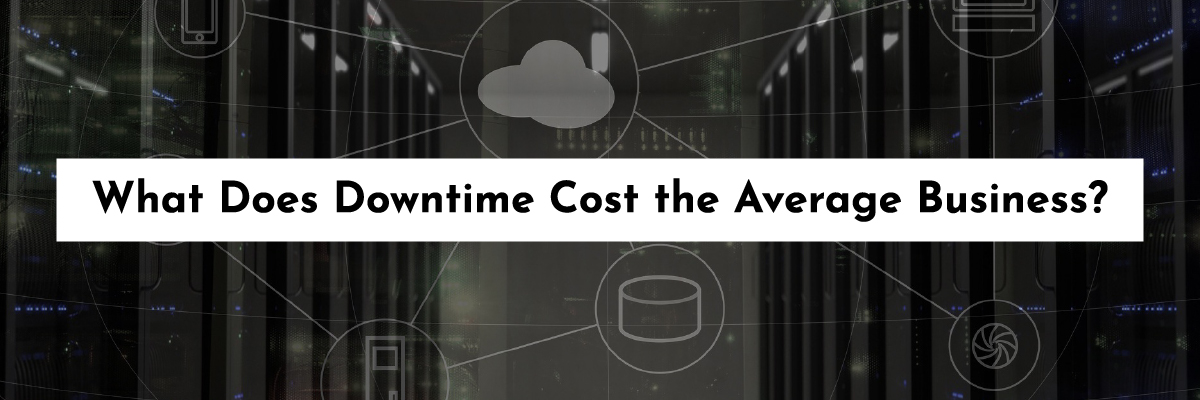
Introduction: What is Managed IT Services?
Managed IT services allow businesses to assign their IT operations to an expert organization that concentrates in handling these duties. Protected Harbor, known as Managed Service Providers (MSPs), We are responsible for the entirety or portions of a business’ IT systems, as agreed upon in a Service Level Agreement (SLA). IT equipment is typically procured by the client, and depending on the SLA, Managed Service Providers may provide round-the-clock monitoring, issue resolution and reporting, and more.
According to the SLA, managed service providers charge a flat fee for delivery of their services over a set period of time. The SLA defines exactly what services will be furnished and the degree they will be offered, as well as metrics for measuring the success of these services.
Cloud computing has allowed managed IT services to expand beyond the regions and borders that would constrain the average break/fix IT through the adoption of Software as a Service (SaaS) technologies, as well as Infrastructure as a Service (IaaS) and Platform as a Service(PaaS) also. These capabilities allow managed IT services to scale at a rate dramatically larger and faster than in-house IT operation or break/fix providers.
Key Terms & Definitions

Agent— A small program used by MSPs to remotely gather information about the status of machines and devices. Once installed, it allows MSPs to manage systems, update programs, and resolve issues.
Backup and Disaster Recovery (BDR)— A combination of data backup and disaster recovery solutions that works cohesively to ensure an organization’s critical business functions will continue to operate despite serious incidents or disasters that might otherwise have interrupted them or will be recovered to an operational state within a reasonably short period.
Break/Fix— An older style for delivering IT services and repairs to organizations in a fee-for-service framework. Essentially, a client contacts a break/fix technician to request upgrades, maintenance, or to resolve issues, and the technician bills the customer upon completion of the work.
Fully Managed IT Services— Managed IT services that are coupled with a Network Operations Center to proactively monitor systems, resolve issues and perform work with a level of expertise and efficiency unparalleled to other solutions.
Help Desk— A managed IT service offering that provides information and technical support to end-users. Some MSPs white label their Help Desk services for the client SMB.
Information Technology (IT)— An enterprise solution for storing, transmitting, creating, and using data through computing devices, networks and telecommunications.
Infrastructure as a Service (IaaS)— An MSP offering to SMBs; virtualized hardware over a cloud computing environment such as server space, network connections, IP addresses, load balancers, and other computer infrastructure with which clients can build their own platforms.
Internet of Things— The emergent network of tangible objects and products that contain software, sensors, and connectivity to the Internet and/or private networks and can exchange information based on standards set forth by the International Telecommunication Union’s Global Standards Initiative.
In-House— The process where an organization hires its own IT service providers and pays their salary, benefits, further training, and the infrastructure they oversee. This is typically an extremely costly endeavor, and often businesses that try to procure in-house IT lack the capabilities to fully service their system and an inability to grow.
IT Channel— An industry-exclusive marketplace where VARs, MSPs, and OEMs provide platforms, products and services to end-users by partnering with hardware and software vendors.
Labor Arbitrage— the phenomenon of decreasing end costs by utilizing the abundant labor forces, education, and training of untapped global workforces.
Managed IT Services— Managed IT Services (MITS) refer to outsourcing IT support and management functions to a third-party service provider. MITS providers offer a range of IT services, including hardware and software support, network management, cybersecurity, data backup and recovery, cloud computing, and help desk support, allowing the client to focus on their core business operations.
Managed Services Provider (MSP)— An IT professional (or IT organization) that offers managed IT services.
Mobile Device Management (MDM)— A security platform used to monitor, manage, and secure employees’ mobile devices (laptops, smartphones, tablets, etc.) that are deployed across multiple mobile service providers and across multiple mobile operating systems being used in an organization.
Platform as a Service (PaaS)— A virtualized platform within a cloud environment that allows end-users to develop and manage Internet applications that would otherwise require a complex infrastructure to launch apps.
Remote Monitoring and Management (RMM)— a platform utilizing a collection of services and tools that can monitor, manage, and deploy solutions to servers and endpoint devices utilizing agent software installed on endpoint systems.
A service-level agreement (SLA)— Essentially, a contract between a vendor and a client that specifies what the vendor will furnish the timeframe in which it will be furnished and the criteria for measuring vendor success.
Small and Medium-Sized Business (SMB)— On average, business or organization that has 100 or fewer employees is considered small; 100-999 employees are medium-sized. IT channel partners often seek SMB organizations as clients.
Software as a Service (SaaS)— Sometimes referred to as “software on demand,” SaaS is a licensing and distribution model that utilizes a subscription basis for access to software that is centrally hosted by its provider and accessed by end-users via a client.
Value-Added Reseller (VAR)— An organization that adds services or features to a product, then resells it as a new product or solution.
History of Managed IT Services
At the outset of enterprise computing, information technology services and business models on a break/fix basis, meaning that computer systems were only managed by an expert when they did not work, necessitating a technician to fix it. This technician may also have been the person who built and/or installed the computer system, due to the proliferation of small IT shops that specialized in these small-scale client services at the time.
However, as time progressed computer manufacturing grew to a large scale, leaving the small IT dealer to focus less on manufacturing and more on break/fix. This system was time-consuming, labor-intensive, costly and reactive. It did not allow the technician room to grow their business or take on new clients without massive investments in labor and infrastructure.
As computing devices increased yearly, the divide between break/fix technicians and the number of computers they could reasonably service under the break/fix model grew wider and wider. Managed IT services emerged in the early years of the millennium to meet this need, shifting far from the break/fix model.
Managed IT services heralded a proactive approach to IT, attempting to conduct maintenance, upgrades, system monitoring, and issue resolution on a routine basis, with the goal of preventing problems before they started. Automation increased Internet capabilities, and cloud computing allowed for monitoring and issue resolution to be provided remotely, enabling more efficient processes and a consolidation of resources.
Efficiency, consolidated resources, and client satisfaction, coupled with fixed rates, the ability to offer greater service offerings, and take on a larger clientele led to managed IT services becoming the industry-standard approach to managing computer systems large and small for SMBs.
The Managed IT Services Model
MSPs managed platform utilize a broad range of IT expertise to resolve issues efficiently. Unlike break/fix providers, MSPs can employ the latest processes and software to proactively monitor endpoints, keeping systems up-to-date, and preventing issues before they arise. Managed IT services are also available 24x7x365, allowing end-users to take nights and weekends off while the MSPs do the heavy lifting on tasks and processes done after hours.
MSP services are typically offered at a flat recurring rate in tiered levels, offering a greater level of automation and a higher degree of management at higher levels based on the specified service level agreement. End users only pay for the services they require and can increase or decrease their tier based on business needs and demand.
As with other necessary business functions like utilities, the end-user pays for services provided offsite, such as remote monitoring and management, help desk solutions, backup and disaster recovery, and more. Managed IT services thus become essential operating expenses to maintain core functionality, rather than additional expenses applied during exceptional issue resolutions with break/fix models. MSPs enable their end-users to run their businesses more smoothly and more efficiently than they would otherwise. Additionally, they offer SaaS-based solutions and a pricing model that can’t be achieved with in-house options.
However, managed IT services do not necessarily make the enterprise IT professional obsolete; for the end-user, an IT professional can act as an endpoint liaison that manages the relationship, provides feedback, and analyzes the reports provided by the MSP. Because the majority of routine work is being completed by the MSP, the IT professional is capable of greater efficiency and has the flexibility to tackle larger, more complex projects they would otherwise not have the time or capacity to take on.
What kinds of managed IT services are available?
IT services New York are available through reputable providers in New York, and encompass a wide range of offerings tailored to meet diverse business needs. These services, offered by the best-managed IT service providers, include comprehensive monitoring and maintenance of equipment, proactive IT systems management, and remote monitoring and management of servers and networks.
Unlike traditional break/fix models, modern managed service providers adopt proactive approaches to maintenance, incorporating patch management and predictive maintenance to prevent issues before they arise. Cloud-based managed services, including Software as a Service (SaaS), Infrastructure as a Service (IaaS), and Platform as a Service (PaaS), offer scalable solutions to meet growing demands without the overhead of managing on-premises infrastructure.
Furthermore, managed security services are crucial for both traditional and cloud-based infrastructure, providing reliable protection against evolving threats. Trusted security experts play a vital role in safeguarding businesses, particularly those with hybrid cloud environments.
For small businesses seeking affordable managed IT services New York, partnering with a reputable managed service provider NYC can provide tailored solutions to meet their specific requirements, ensuring reliable support, optimal performance, and affordable managed IT services for small businesses.
Benefits of Managed IT Services
Through outsourcing managed IT services, SMBs are able to reap the benefits of receiving IT support and business continuity at a significantly reduced cost in comparison to creating a comparable team in-house. Additionally, MSPs can also offer a wealth of experience from actively managing multiple client accounts that in-house teams would not collectively have.
Additionally, by using an MSP organizations are able to forecast their monthly, quarterly, and yearly expenditure on IT, and are freed from having to focus on this area of operational readiness. This allows SMBs to focus on growing their business without worrying about day-to-day IT issues or requirements.
Another benefit to managed IT services is a greater opportunity for security expertise and successfully enacted security policies. MSPs work with standards such as PCI compliance day in, day out, and should be able to steer your organization within the parameters and regulations it needs to adhere to. For some organizations, especially in finance, healthcare, educations, and other industries, this type of regulatory compliance is mandatory for the IT portion of their business, and requires the expertise and experience that a managed service provider can offer. MSPs can mitigate risk in this way while assuring that the experts in charge of your IT operations are always up to date on the latest information, technologies, and processes that will keep your infrastructure working efficiently and successfully into the future.
In short, Managed IT Services can provide organizations with a comprehensive and cost-effective IT support solution, helping to ensure the reliability, security, and availability of critical IT systems.
If you’re looking to get the most out of your manage service providers in the Hudson Valley New York area, then Protected Harbor is the clear choice.
Source : https://www.continuum.net/resources/mspedia/managed-it-services-overview




















